INTERNACIONAL
Guyana reforzó su defensa con apoyo militar francés ante las tensiones con el régimen de Venezuela por el Esequibo

El presidente de Guyana, Irfaan Ali, anunció la aceptación de asistencia tecnológica de Francia que incluye radares terrestres y marítimos, como parte de un esfuerzo para enfrentar posibles amenazas derivadas de la crisis política y militar en Venezuela y sus tensiones con Estados Unidos. Este anuncio se realizó durante la inauguración de la embajada francesa en Georgetown, donde Ali subrayó el valor de la cooperación en materia de seguridad frente al creciente clima de inestabilidad regional.
Durante el evento, el presidente del Comité de Asuntos Extranjeros, Defensa y Fuerzas Armadas del Senado francés, Cédric Perrin, informó que el Gobierno francés adquirió cinco naves para Guyana con el propósito de fortalecer su capacidad de vigilancia y defensa.
Perrin destacó que, ante la “tensa situación que vive Venezuela”, la necesidad de Guyana para adquirir equipos de monitoreo es ineludible y, según sus palabras, “el único país capaz en ayudar para ello es Francia”.
Según confirmó la Dirección General de Armamentos (DGA) de Francia en un comunicado emitido el 1 de octubre, los equipos comprados corresponden a aviones Dassault Falcon LXS Albatros, parte del Programa de Vigilancia Marítima e Intervención Aérea. Este plan busca modernizar y reforzar las capacidades de la Marina francesa, sumando hasta la fecha doce aeronaves, de las cuales siete ya fueron entregadas desde diciembre de 2020.
Ali adelantó que el Gobierno guyanés sumará en 2026 una embarcación de vigilancia fabricada en Francia, con el fin de potenciar los patrullajes en la zona económica exclusiva del país, en respuesta a crímenes transnacionales y la pesca ilegal. Esta nueva embarcación complementará a la ya existente en la Fuerza de Defensa de Guyana. Perrin subrayó que la cooperación bilateral incluye compartir inteligencia y fomentar la interoperabilidad tecnológica: “El equipamiento de Guyana debe ser capaz de comunicarse con el nuestro”.
La creciente cooperación entre Georgetown y París se produce en un contexto marcado por la histórica disputa con Caracas sobre el Esequibo, una región de 159.542 kilómetros cuadrados administrada por Guyana, pero reclamada por Venezuela desde hace casi dos siglos. Este conflicto, en relativa calma, se tornó más agudo en los últimos cinco años tras el descubrimiento de importantes yacimientos petroleros bajo las aguas del territorio.

La situación escaló a nivel internacional cuando Irfaan Ali denunció en la Asamblea General de Naciones Unidas la “persistencia de leyes unilaterales y amenazas de anexión” por parte del régimen venezolano. Ali cuestionó la eficacia del Derecho Internacional tras el rechazo de Nicolás Maduro a cumplir las órdenes de la Corte Internacional de Justicia (CIJ), que ha confirmado su jurisdicción sobre el caso y ordenado a Venezuela abstenerse de modificar el statu quo de la zona. “Si se pueden pisotear los derechos de un Estado pequeño e ignorar las órdenes jurídicamente vinculantes, ¿qué protección le queda a cualquier nación bajo el Derecho Internacional?”, planteó Ali en Nueva York, reiterando que Guyana mantiene su confianza en la legislación internacional a pesar de las “reiteradas amenazas y agresiones” evidenciadas en la celebración de elecciones venezolanas sobre la región, en contravención a las medidas provisionales dictadas por la CIJ.
La respuesta de la dictadura chavista no tardó. El ministro de Exteriores Yván Gil calificó el discurso de Ali como “plagado de falsedades, manipulación y sometimiento a los intereses del imperio y de las transnacionales”, señalando en su canal de Telegram que el mandatario guyanés “actúa como administrador de ExxonMobil y heredero de la tutela colonial británica”. Además, acusó a Guyana de ignorar el Acuerdo de Ginebra de 1966 y entregar recursos unilateralmente en un territorio en disputa.

Por su parte, la vicepresidenta del régimen venezolano, Delcy Rodríguez, acusó a la petrolera estadounidense ExxonMobil de financiar a Guyana para promover una “agresión militar” contra Venezuela. Rodríguez, que además es ministra para Hidrocarburos, afirmó que no se debe “repetir el pasado” de colonialismo y expansión imperialista. Durante la misma conferencia, Nicolás Maduro reafirmó que “Venezuela jamás se humillará ante ningún imperio” y condenó cualquier tentativa de la nación vecina para acercarse a Estados Unidos.
El Esequibo, rico en recursos petroleros, gasísticos, mineros, hidráulicos y forestales y con un importante potencial turístico, permanece bajo administración guyanesa desde un laudo arbitral dictado en 1899. La disputa territorial ha cobrado nuevo vigor tras la exploración petrolera, mientras ambos gobiernos se acusan mutuamente de violar acuerdos internacionales y de ceder a intereses ajenos a la región.
(Con información de EFE y EP)
INTERNACIONAL
ObamaCare subsidies at center of Dem shutdown fight ‘fuel’ healthcare cost inflation, conservatives say
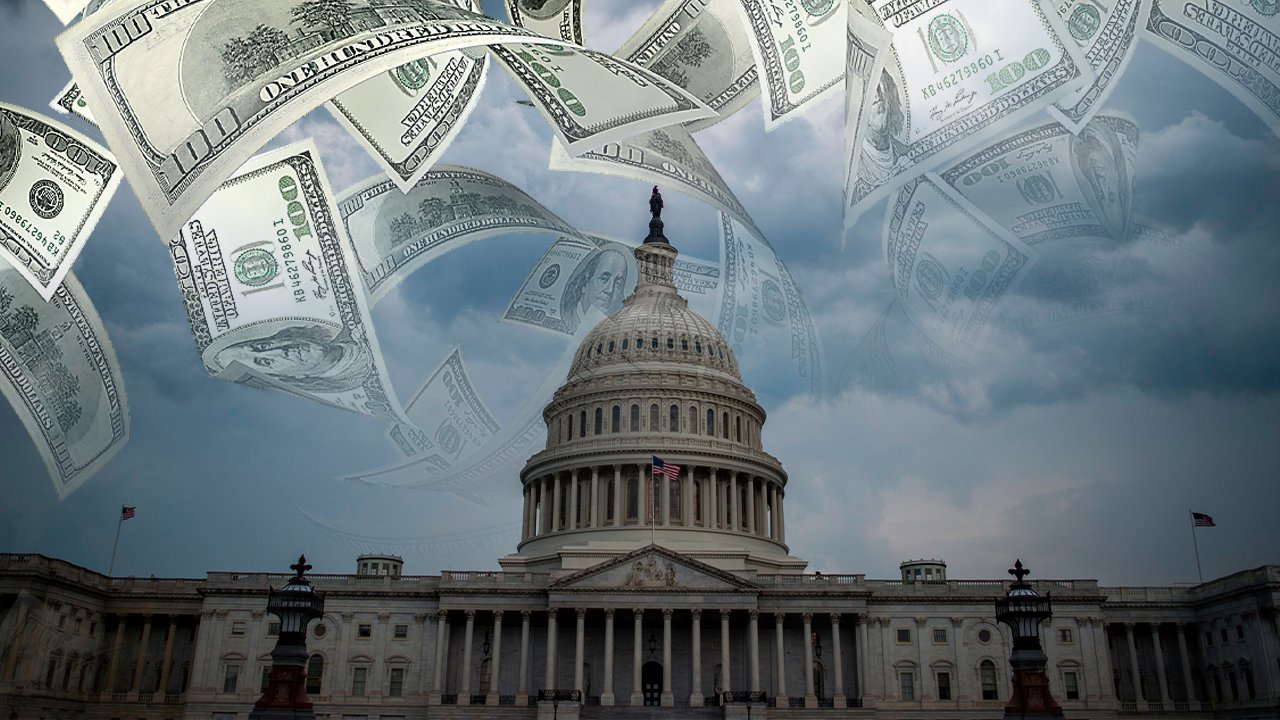
NEWYou can now listen to Fox News articles!
The government has been shut down for a week and so far shows no clear sign of stopping, as Democrats continue to demand that any funding bill include an extension of enhanced ObamaCare subsidies, which are set to expire at the end of 2025.
But conservative groups are pushing back hard, arguing that those subsidies are fuel on the fire of higher healthcare premiums.
«What the Biden COVID credit did is they made the situation worse in two ways: They shifted a portion of the premium away from the enrollees to the taxpayer, and they brought more people into the subsidy structure by lifting the cap at four times the poverty line,» Brian Blase, president of Paragon Health Institute, told Fox News Digital.
«So if the underlying ObamaCare subsidies were inflationary, then the Biden enhancements to it just pour fuel on that underlying inflationary structure.»
SCHUMER’S SHUTDOWN SCHEME EXPLAINED: DEMS DOUBLE DOWN ON OBAMACARE CREDITS AS STANDOFF DRAGS ON
The government is in a partial shutdown after Congress failed to reach an agreement on federal funding. (Getty Images)
ObamaCare, formally called the Affordable Care Act (ACA), established a marketplace where healthcare insurers offer plans under certain rules set in place by the federal government, among other provisions. People and families are eligible for subsidies based on their income relative to the Federal Poverty Level (FPL).
Former President Joe Biden’s American Rescue Plan, passed during the COVID-19 pandemic, expanded access so more Americans could qualify for subsidized ObamaCare plans while also lowering out-of-pocket costs. A Democrat-led Congress later extended those benefits to 2025 under the Inflation Reduction Act.
Now, however, Democrats are warning that many Americans’ healthcare costs are at risk of drastically rising if those enhanced subsidies are allowed to expire.
But conservative groups who have long objected to ObamaCare’s effects on the market are now arguing that the subsidies themselves have driven up the amount of money that healthcare companies charge for premiums.
Brittany Madni, executive vice president at the Economic Policy Innovation Center (EPIC), told Fox News Digital, «You do have patients who are still continuing to pay high prices, and a huge reason that they’re paying higher prices is because the entire system has been artificially inflated by the unaffordable mandates in ObamaCare and the continued subsidies.»
«The supersized COVID credit subsidies aren’t reducing prices whatsoever. They’re just adding funds to the insurance revenues,» Madni said.
ObamaCare did originally include a federal-level tax penalty for Americans who remained uninsured after its passage. That was repealed under the first Trump administration, but some states have levied their own penalties in its place.
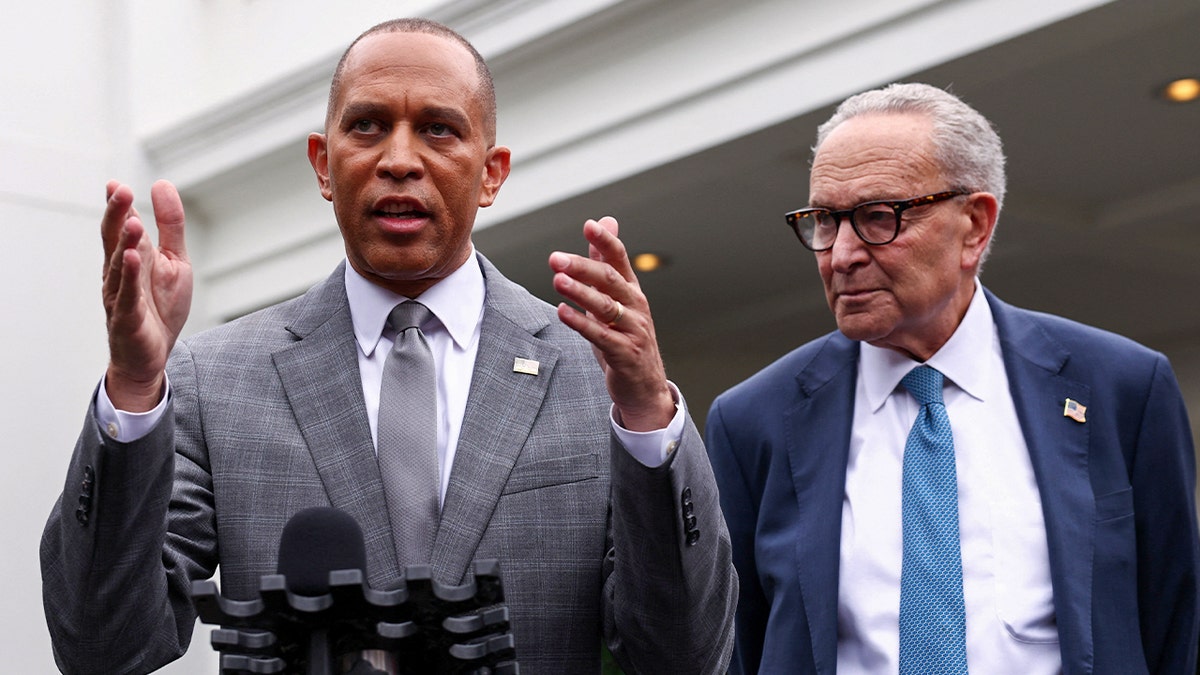
House Minority Leader Hakeem Jeffries, left, speaks to the media next to Senate Minority Leader Chuck Schumer at the White House in Washington on Sept. 29, 2025. (Kevin Lamarque/Reuters)
But conservatives say rising healthcare costs have been most acutely felt by U.S. taxpayers rather than ObamaCare enrollees.
«When insurers increase premiums, the cost is not paid by the enrollee, it’s paid by the taxpayer. So that gives insurers less incentive to negotiate lower prices with healthcare providers,» he said.
He said Biden’s legislation «made the situation worse because you make the taxpayer share even greater than it already was, and he lifted the cap at four times the poverty line, which brought more people into this subsidized market. So when you have all these people in a market where they don’t care what the premiums are, that is, of course, going to be inflationary.»
Madni agreed that the COVID-era subsidies served to increase costs on taxpayers.
«What do you do if someone who is younger and healthier is choosing not to go into the risk pool and therefore driving up the overall cost of the risk, all because now it’s just full of sick people instead of healthy people in the middle?» You offer the plans for such a low rate that it seems silly not to jump into the deal,» she said. «You can’t actually get rid of the cost. You can only shift the cost. So it shifts from the enrollees who are in the risk pool to taxpayers.»
House Ways & Means Committee Chair Jason Smith, R-Mo., whose committee has jurisdiction over the enhanced subsidies, told Fox News Digital, «Democrats are doubling down on their failure to reduce the cost of healthcare, with premiums for ObamaCare marketplace plans increasing 80% since they were created a decade ago.»
«When it comes to healthcare, Americans are paying more but getting less, paying higher deductibles, having their claims denied, and unable to see their doctor while insurers profit from generous taxpayer subsidies handed to them by Washington Democrats,» Smith said.
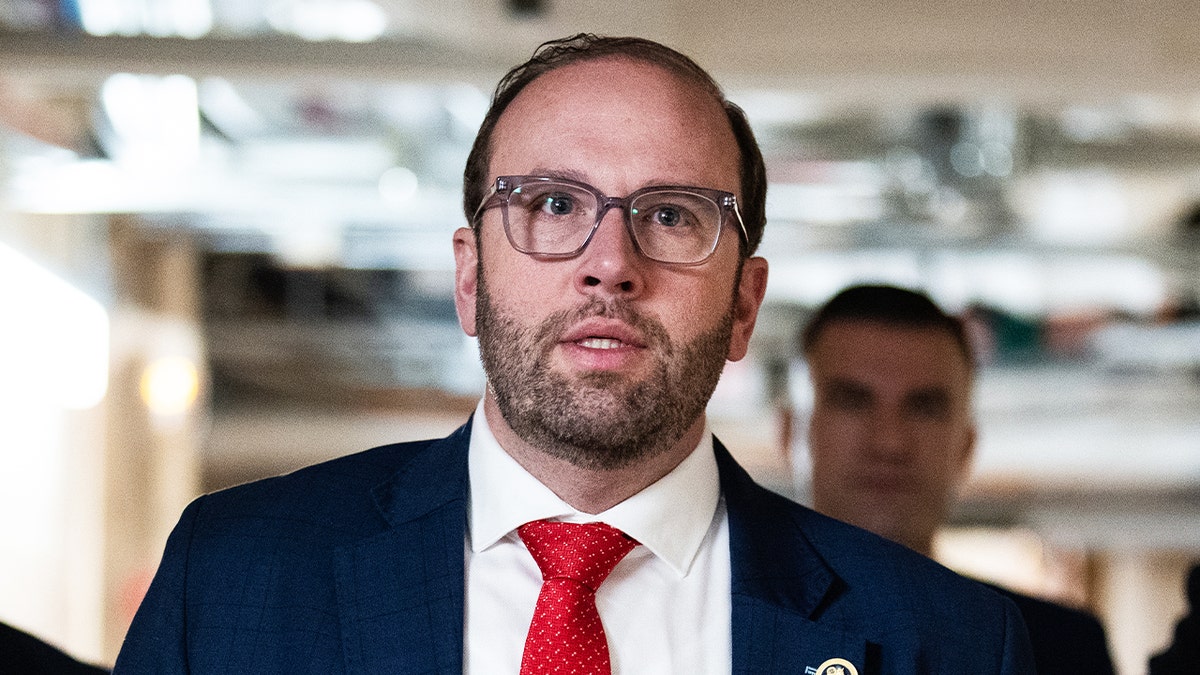
House Ways & Means Committee Chair Jason Smith, R-Mo., leaves a meeting of the House Republican Conference in the U.S. Capitol on Feb. 14, 2024. (Tom Williams/CQ-Roll Call, Inc via Getty Images)
But outside conservative circles, people in the healthcare sphere argue that Americans will feel financial pain if the subsidies expire and deny the COVID-era enhancements’ contribution to inflated prices.
Cynthia Cox, who oversees ObamaCare research for KFF — an independent health policy research, polling and news organization — said that extending the subsidies would cost more taxpayer dollars but that they did not raise costs for insurers or enrollees.
«I think from a taxpayer perspective or from a federal spending perspective, they certainly do raise costs,» Cox said. «But from an insurance perspective, they bring down average cost and, from an enrollee perspective, it also brings down the cost that they’re paying.»
Cox also said the ACA itself did have some «inflationary» aspects but that the COVID-era enhancements were not part of them.
DEMOCRATS REFUSE TO BUDGE OVER OBAMACARE FIGHT AS SHUTDOWN DRAGS ON
«The tax credits do not have an inflationary effect on insurance premiums. In fact, they help keep they have a downward effect on insurance and the amount that the insurance company is charging,» Cox told Fox News Digital.
She pointed to the ACA’s protections for people with preexisting conditions, such as bans on insurance companies denying coverage or charging more based on individuals’ health, as potential drivers of healthcare cost inflation.
«But then the tax cuts are meant to kind of offset that by reducing how much individuals pay and subsidizing them,» Cox explained.
«The idea is that it will make health insurance more attractive to healthier people, so therefore would not wait until they get sick to get coverage. They would start paying into the insurance pool when they’re healthier, and then that brings down the overall average premium that insurers charge.»
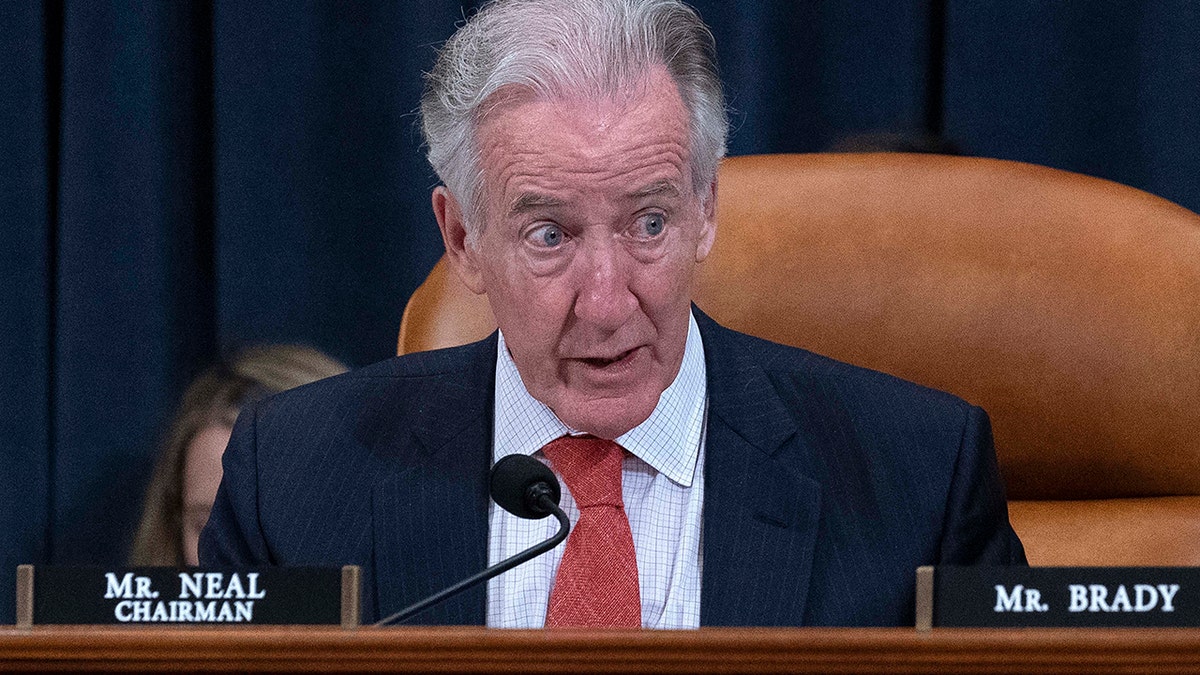
House Ways and Means Committee ranking member Rep. Richard Neal, D-Mass., speaks during a hearing on Capitol Hill in Washington on June 8, 2022. (Jose Luis Magana/AP Photo)
Brendan Buck, spokesman for Keep Americans Covered, reiterated Democrats’ warning that the expiring subsidies will lead to higher costs for people who currently benefit from them.
«There’s no inflation quite like seeing your health premiums more than double, which is the reality facing millions of working people if Congress doesn’t act. Things do cost too much, but the answer is not making families pay thousands more for their healthcare,» Buck told Fox News Digital.
CLICK HERE TO GET THE FOX NEWS APP
Rep. Richard Neal, the top Democrat on the House Ways & Means Committee, blamed President Donald Trump’s policies for driving up costs across the board.
«Republicans will throw out any excuse — no matter how debunked — to justify letting healthcare costs skyrocket. The facts are clear: extending the ACA tax credits will keep coverage in reach for millions, but Republicans would rather see their constituents’ costs jump on average by 114 percent than admit they’re wrong. And the truth is, the biggest driver of inflation and unaffordability is Trump himself,» Neal told Fox News Digital.
politics,health care healthy living,congress,government shutdown
INTERNACIONAL
De barras a croissants y milkshakes: cómo el chocolate de Dubái se convirtió en tendencia mundial
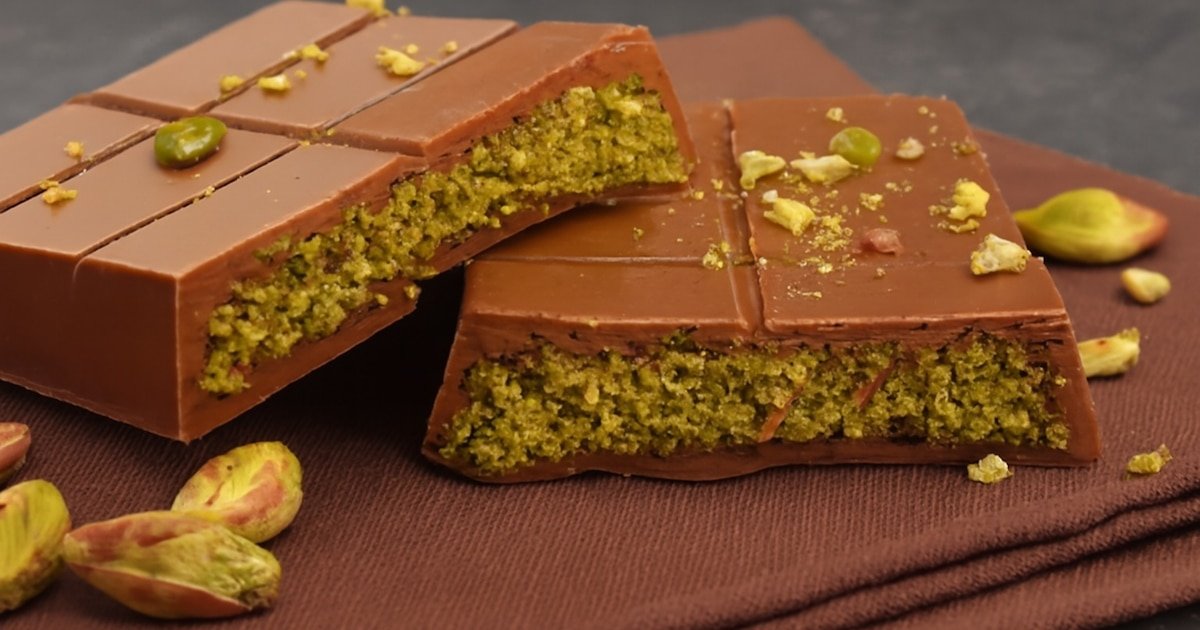
El chocolate de Dubái transformó el mercado internacional de dulces en el último año. Fabricantes de distintos países, comerciantes al por mayor y consumidores impulsaron la popularidad de este producto, que surgió en Emiratos Árabes Unidos en 2021 y en poco tiempo dio el salto a los escaparates y redes sociales de todo el mundo. Tiendas de Nueva York, supermercados de Europa y cadenas estadounidenses ofrecen ahora diferentes versiones de chocolate de Dubái, una innovación que reúne ingredientes clásicos y toques de lujo.
Según la agencia Associated Press, el bar clásico de chocolate de Dubái surgió en 2021 gracias a Fix Chocolatier, una empresa con sede en Emiratos Árabes Unidos. Los usuarios de redes sociales difundieron videos y fotografías del producto durante 2023 y lo llevaron a la categoría de fenómeno viral global. A mediados de ese año, búsquedas en Google relacionadas con “chocolate de Dubái” experimentaron un fuerte aumento y se mantuvieron elevadas hasta la actualidad.
El atractivo del chocolate de Dubái radica en su combinación de sabores y texturas. De acuerdo con lo publicado por Associated Press, la versión original consiste en una barra con una gruesa capa de chocolate con leche, rellena de pistachos triturados, tahini y kadayif, un tipo de pasta de trigo crocante que añade una capa de textura. El resultado es un producto rico e indulgente, diferente a los chocolates tradicionales. El relleno puede variar e incorporar, según el fabricante, elementos como crema de cacahuate, frutas, mermeladas, malvaviscos, polvo de té verde o incluso oro comestible.

El impacto del boom repercute en todo el sector alimenticio. Según cifras de la consultora NielsenIQ mencionadas por Associated Press, las ventas de chocolates rellenos de pistacho sumaron USD 822.900 en el mercado estadounidense durante el año finalizado en junio, aunque ese segmento sigue siendo pequeño ante los USD 16.270 millones globales si se considera el rubro total de chocolates. Lo que destaca, de acuerdo al informe, es el crecimiento: mientras las ventas generales caían levemente, la demanda de chocolates con pistacho se disparó un 1.234% frente al año anterior.
De acuerdo con Stew Leonard, Jr., responsable de la cadena de supermercados Stew Leonard’s en Nueva York, ningún otro producto individual registró una rotación tan rápida. Desde el debut de la barra BeeMax Dubai en marzo pasado, la empresa introdujo una propia, fabricada por Chocopologie, y complementó la gama con una caja especial para las fiestas de fin de año. Entre las nuevas propuestas figuran mini conos helados, pralinés y variantes clásicas en barra.
La tendencia no se limita a las barras. Según detalla Associated Press, la oferta incluye coberturas de chocolate y pistacho para dátiles, nueces recubiertas, parfaits de fresa y versiones con láminas de oro, cuyo costo alcanza los USD 79,99, mientras las barras comunes se venden a USD 18,99. Chocolove creó caramelos pequeños, Matteo’s Coffee Syrups lanzó sirope de chocolate versión Dubái sin azúcar, y marcas como Moda, Magno y Leonessa adaptaron el concepto a su catálogo.

El gran interés afecta la cadena de abastecimiento. Según el productor iraní de frutos secos Keinia, citado por Associated Press, el aumento del consumo de chocolate de Dubái genera escasez de pistachos en este año. Las dificultades se agravan por la viralización de la tendencia en aplicaciones como TikTok y por limitaciones en la oferta agrícola, lo que estimula el valor de los insumos y la diversificación en los rellenos de las barras.
El consumidor define el éxito del producto tanto por su sabor como por su aspecto visual. De acuerdo con testimonios publicados por Associated Press, la textura resulta central: la suavidad del chocolate, el relleno cremoso y el crujido aportado por el kadayif construyen una experiencia sensorial diferente. Los ingredientes, que incluyen pistachos, rosas, azafrán y cardamomo, suman una percepción de lujo y sofisticación. Este carácter selecto se ve reflejado en el precio, que supera ampliamente al de una barra convencional.
Por último, la inclusión de productos inspirados en el chocolate de Dubái en cadenas internacionales y la continuación de ventas elevadas reflejan una tendencia consolidada y en expansión. El fenómeno redefine los hábitos de consumo de chocolate en mercados distantes, estimula la creatividad de empresas y presenta desafíos logísticos para toda la cadena de distribución. La innovación se manifiesta tanto en el sabor como en la presentación, y el chocolate de Dubái se instala como un referente de lujo, novedad y éxito comercial en el sector global de dulces.
chocolate dubai
INTERNACIONAL
As Trump’s Gaza deal nears, family warns Israel not to free another Sinwar
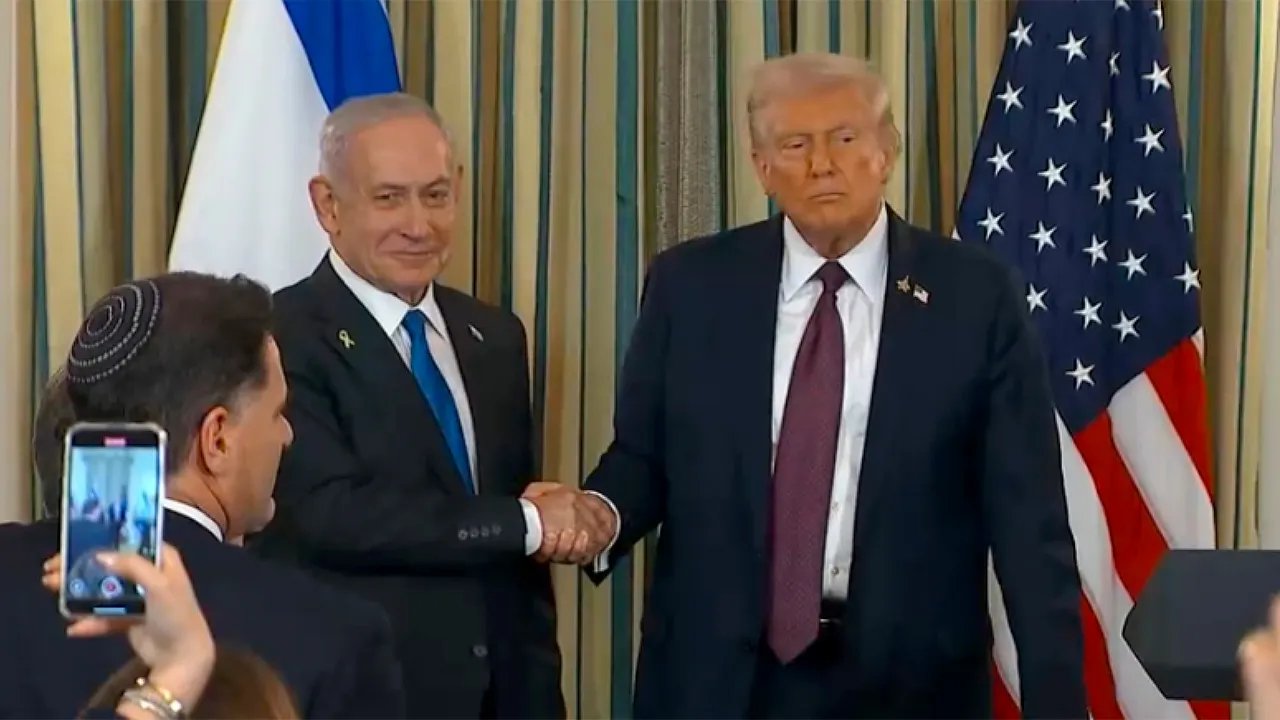
NEWYou can now listen to Fox News articles!
As President Donald Trump moves to finalize his 20-point plan to end the Gaza war, Israel faces a pivotal decision that could reshape the conflict’s aftermath. The framework envisions a phased Israeli withdrawal from Gaza, the return of all hostages, and a major prisoner exchange. In return, Hamas would commit to disarmament and allow a technocratic transitional authority to manage Gaza’s reconstruction.
Part of the agreement involves releasing hundreds of convicted Palestinian terrorists, a clause that has already triggered backlash from the families of victims.
Dr. Michael Milshtein, head of the Moshe Dayan Forum at Tel Aviv University and one of Israel’s foremost experts on Hamas, told Fox News Digital that the list of roughly 250 prisoners contains names that represent what he called «a real strategic danger.»
TRUMP UNVEILS 20-POINT PLAN TO SECURE PEACE IN GAZA, INCLUDING GRANTING SOME HAMAS MEMBERS ‘AMNESTY
Palestinian Hamas terrorists stand guard on the day of the handover of hostages held in Gaza since the deadly Oct. 7, 2023 attack, as part of a ceasefire and a hostages-prisoners swap deal between Hamas and Israel, in Rafah in the southern Gaza Strip, Feb. 22, 2025. (Reuters/Hatem Khaled/File Photo)
«These are not low-level activists,» Milshtein said. «Among them are people who built power and influence inside prison. When released, they will return as leaders.»
He cited several examples that, he said, demonstrate the risk of past exchanges. Among the prisoners now under discussion are Abbas al-Sayed, convicted for the 2002 Park Hotel bombing in Netanya that killed 30 people; Ibrahim Hamed, former Hamas military commander in the West Bank, serving more than 40 life sentences; Abdullah Barghouti, who produced explosives for a series of large-scale suicide bombings and Hassan Salameh, convicted for orchestrating multiple bus attacks in the 1990s.
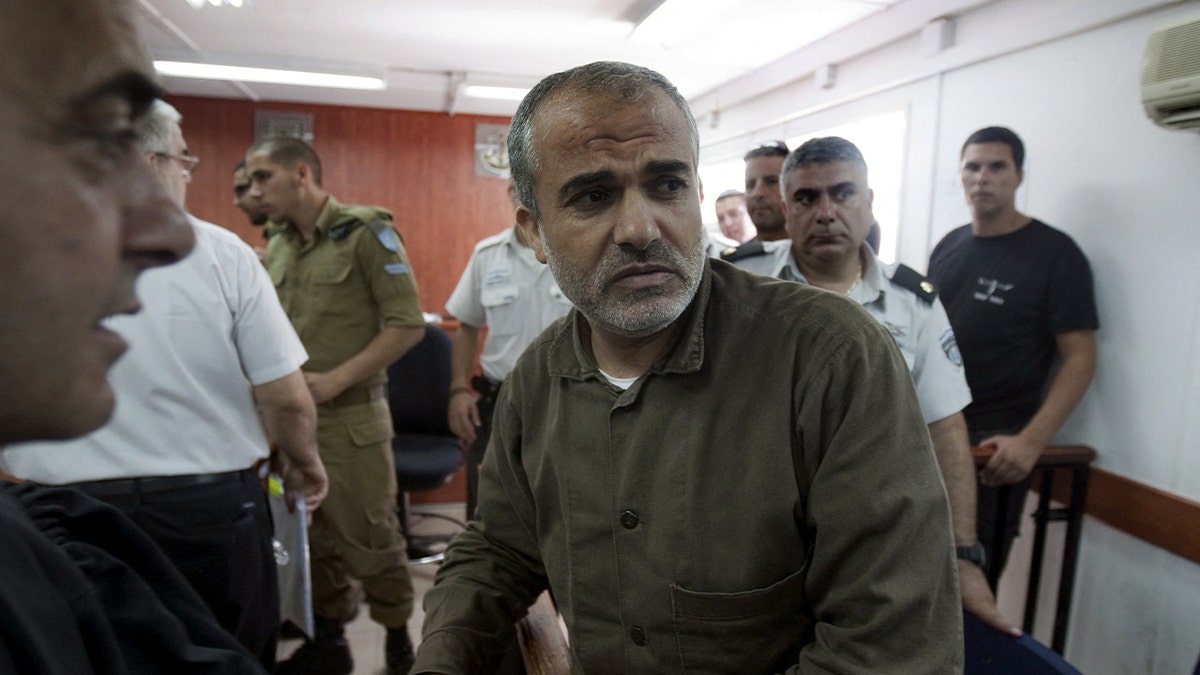
Ibrahim Hamed, a former head of the Hamas terrorist movement in the West Bank, looks on as he arrives for sentencing at the Ofer military court near Ramallah, West Bank, on July 1, 2012. The Israeli military court sentenced Hamed to 54 life terms after convicting him of ordering attacks that killed dozens of Israelis, the army said.
«These are people with dozens of life sentences,» Milshtein explained. «We’ve already seen what happens when such figures are freed. Many of those who carried out the Oct. 7 massacre were prisoners released in the 2011 Gilad Shalit deal.»
ISRAELI VICTIMS OF TERROR CONCERNED WITH MURDERERS’ RELEASE FROM PRISON, RELIEVED 7 HOSTAGES BACK HOME
Milshtein noted that several recently released prisoners have quickly rejoined Hamas’s leadership abroad. He pointed to Abdel Nasser Issa, a Hamas operative convicted in 1995 who was released earlier this year and soon relocated to Turkey, where he began appearing in podcasts as part of the group’s senior political echelon. «That is the model,» Milshtein said. «They enter prison as operatives and emerge as decision-makers.»
Among the most concerning names, he added, is Jamal Al-Hur, who he described as «one of the five most dangerous.» Al-Hur, deeply connected to Hamas’s hierarchy, has served nearly three decades in prison and now acts as a key liaison between jailed operatives and the group’s external leadership. «He didn’t enter as a leader but became one inside,» Milshtein said. «If released, he will re-establish himself quickly—just as others did before him.»
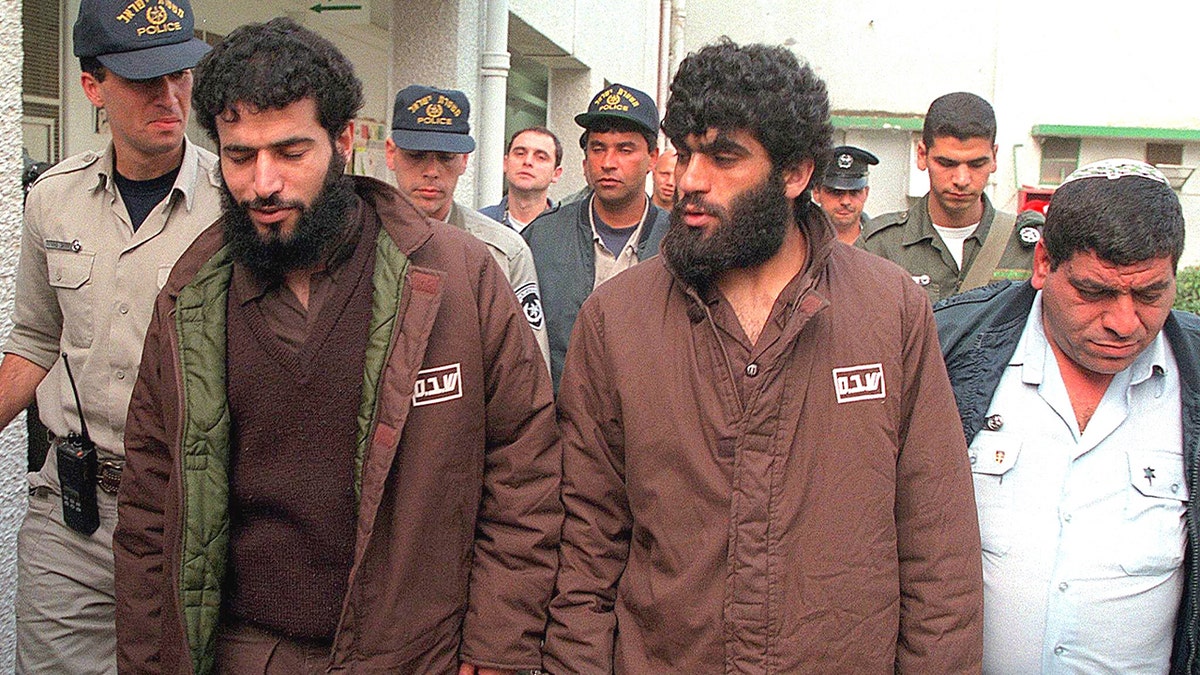
Jamal al-Hur, left, and Rahman Ismael Ranimat, right, are led into an Israeli military court in Lod, Israel, on Feb. 5, 1998. An Israeli military tribunal charged the two with multiple counts of murder in the slayings of 13 Israelis in a series of Hamas attacks. (Danni Salomon/Yedioth/AFP via Getty Images)
The Edri family’s warning
The inclusion of Al-Hur on the draft list has renewed anguish for the family of Sharon Edri, the Israeli soldier he helped kidnap, torture, and murder in 1996. Al-Hur was also convicted for the 1997 Apropo Café bombing in Tel Aviv that killed 13 civilians. Twice before, his name appeared on proposed release lists and was removed after public pressure.
«I know what it’s like not to know where your brother is for seven months,» said Danielle Edry Karten, Edri’s sister, who lives in New York. «There’s nothing that makes me happier than knowing families will soon be reunited with the hostages. But this man shouldn’t be released—not because of my brother alone, but because of the danger he still poses.»
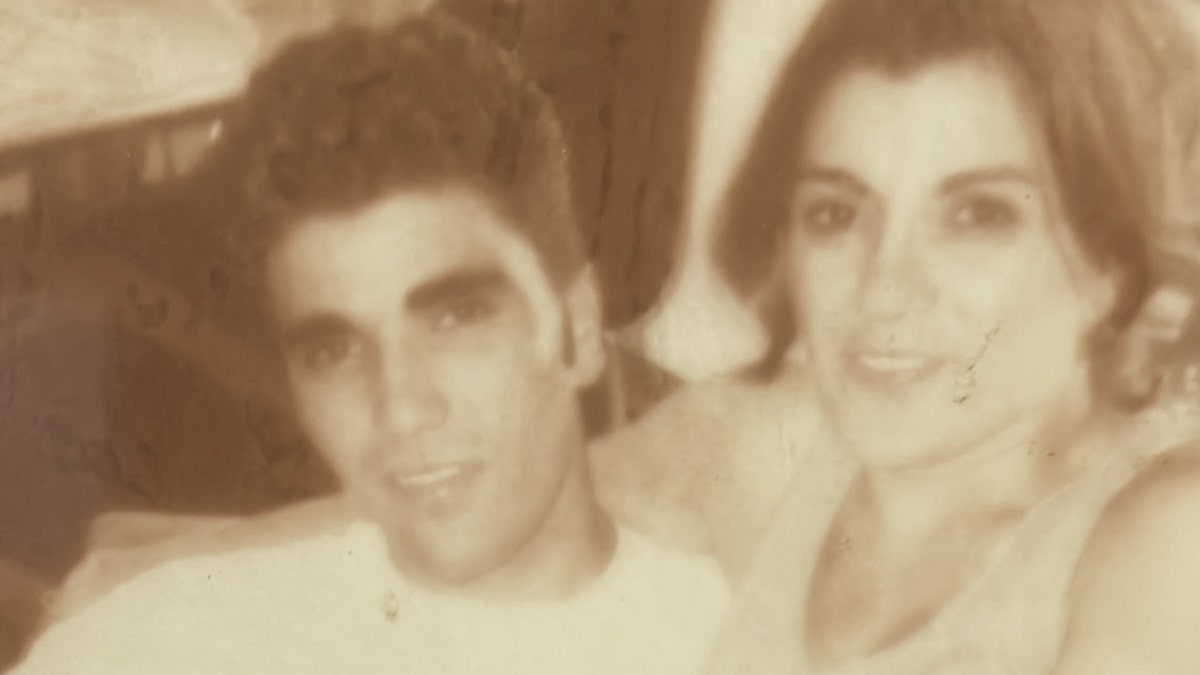
Sharon Edri is seen here with his sister, Danielle Edri Karten. Edri Karten opposes the release of her brother’s killer.
«He kidnapped, mutilated, tortured my uncle,» said Izzy Karten, Edri’s nephew, in an interview with Fox News Digital from New York. «He went to jail, was released, and went on to commit the Apropo Café bombing. Later, he helped organize the kidnapping of the three boys that started the 2014 war. Now he’s a senior Hamas leader inside prison—that’s why we call him the next Sinwar.»
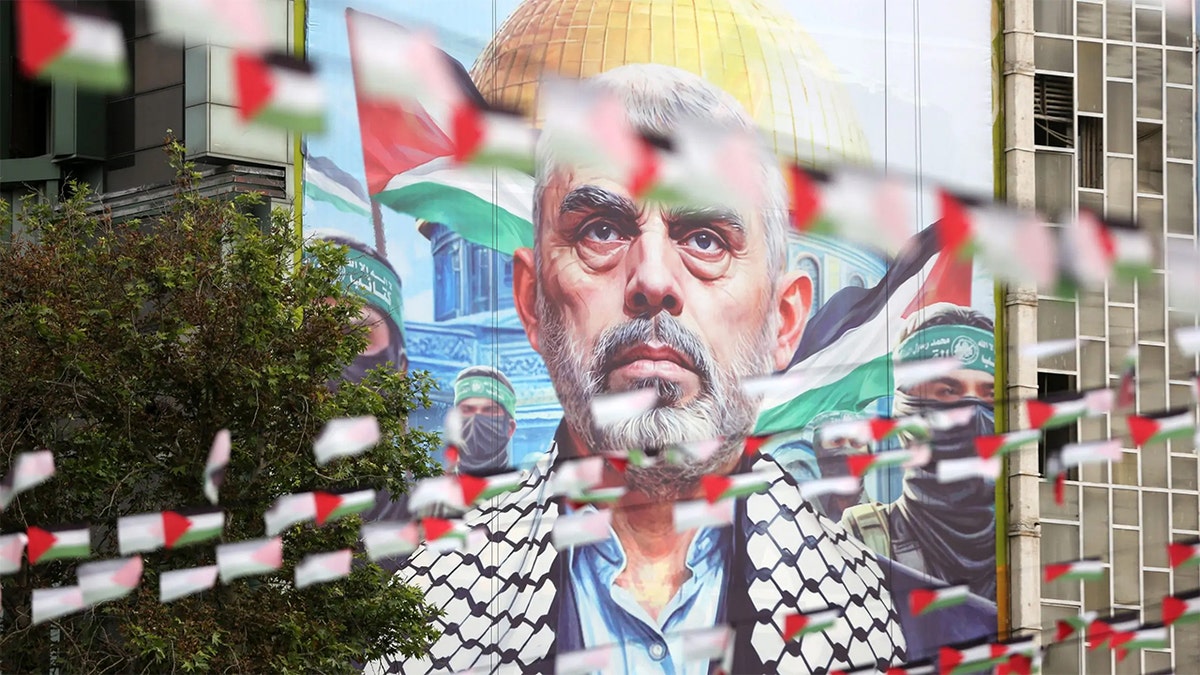
Banners with the photograph of Yahya Sinwar, the Hamas terrorist leader who was killed in an Israeli attack, are hung on the streets in Tehran, Iran on Oct. 19, 2024. (Fatemeh Bahrami/Anadolu via Getty Images)
Karten added: «We’re not against the peace deal. We’re praying for the hostages to come home. We just need to make sure they don’t trade them for the worst of the worst.»
ISRAEL’S ARMY WILL ‘ADVANCE READINESS’ FOR FIRST PHASE OF TRUMP PLAN TO RELEASE HOSTAGES
The family launched a new petition this week calling on the Israeli government to block Al-Hur’s release and to bar any future swaps involving convicted murderers.
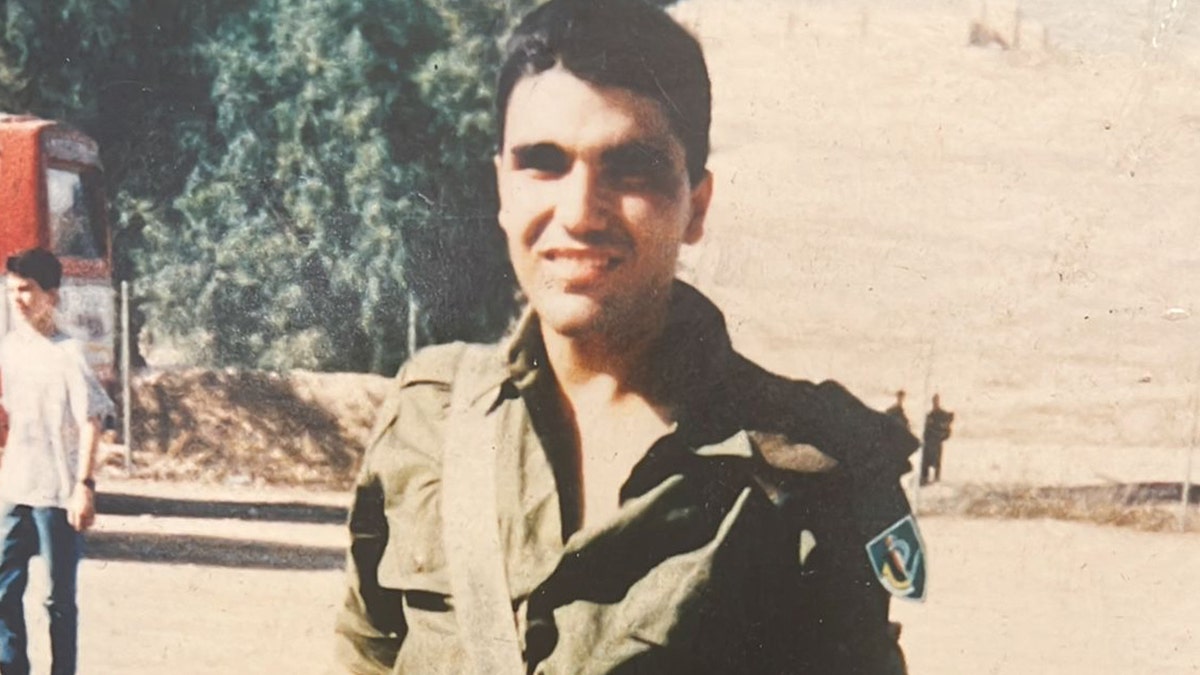
Sharon Edri, an Israeli soldier abducted and killed by Hamas terrorist Jamal al-Hor in 1996, is shown in a family photo provided by the Edri family, who oppose the planned release of his killer as part of a potential prisoner exchange. (Edri Family)
At Sharon Edri’s funeral nearly three decades ago, Netanyahu vowed to the family, «We are telling the killers—you won’t break the people and the family. We will not forget him and your daughter Hana. We will end the terror and will bring peace.» The family now fears that the promise may be undone.
The Nukhba dilemma
Beyond the list of notorious prisoners, another issue threatens to derail the negotiations: Hamas’s demand to release about 90 members of its elite «Nukhba» force, the commandos who spearheaded the most horrific atrocities on the Oct. 7 attack on Israeli communities.
Milshtein, who visited the section of Ramla Prison where some of these terrorists are held, said they remain unrepentant. «I spoke with them,» he told Fox News Digital. «They are fanatical—completely committed. They show no remorse. The only thing they regret is not having killed more people.»
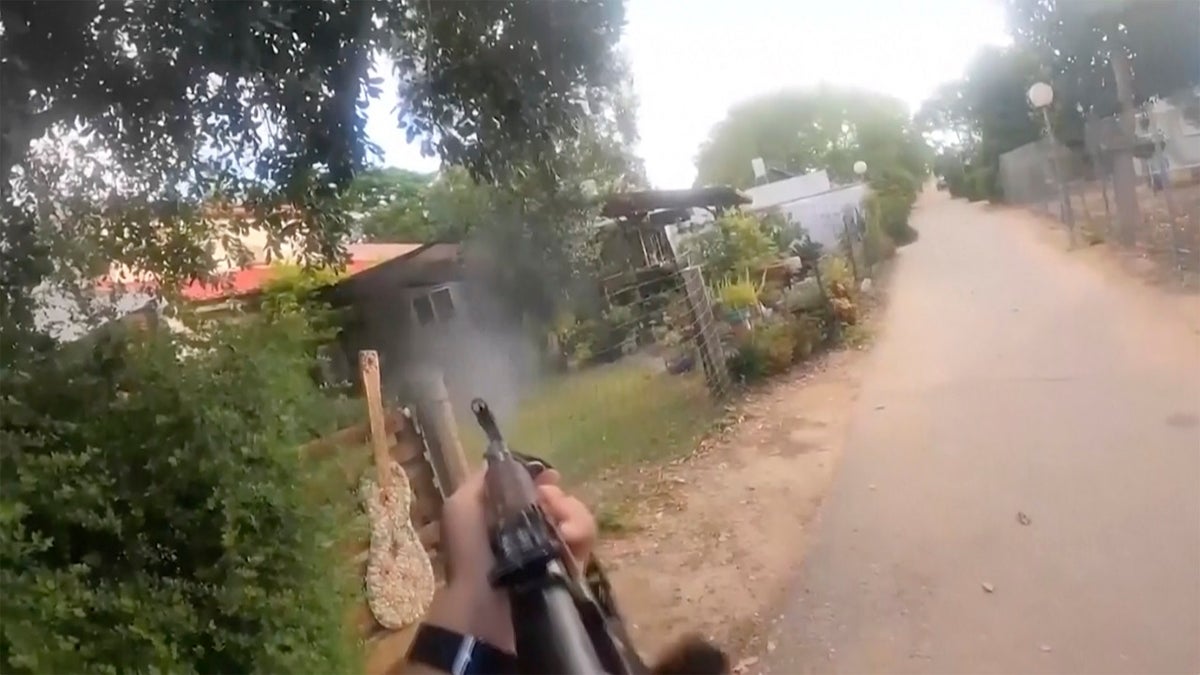
Hamas terrorists killed civilians, including women, children and the elderly, when they attacked Israel on Oct. 7, 2023. (Israel Defense Forces via AP)
He described the Nukhba detainees as the most ideologically extreme and operationally capable among Hamas’ ranks. «They are like a special-forces division with a radical worldview,» he said. «Releasing them would be like setting loose the people who planned and executed the worst day in Israel’s history.»
CLICK HERE TO GET THE FOX NEWS APP
Despite the risks, Milshtein acknowledged that Israel may have no alternative. «It’s a terrible dilemma,» he said. «But strategically, this may be one of those bitter compromises Israel will have to make to bring its citizens home.»
israel,terrorism,conflicts,middle east

 SOCIEDAD3 días ago
SOCIEDAD3 días agoAtacada por ser judía: el aterrador relato de una mujer en Buenos Aires

 CHIMENTOS2 días ago
CHIMENTOS2 días agoMica Viciconte confesó por qué no fue a conocer a su primer sobrino: “Me cuesta, no me hallo”

 POLITICA3 días ago
POLITICA3 días agoTras la renuncia de Espert a su candidatura, el PJ busca capitalizar la crisis libertaria y fortalecerse en las urnas











